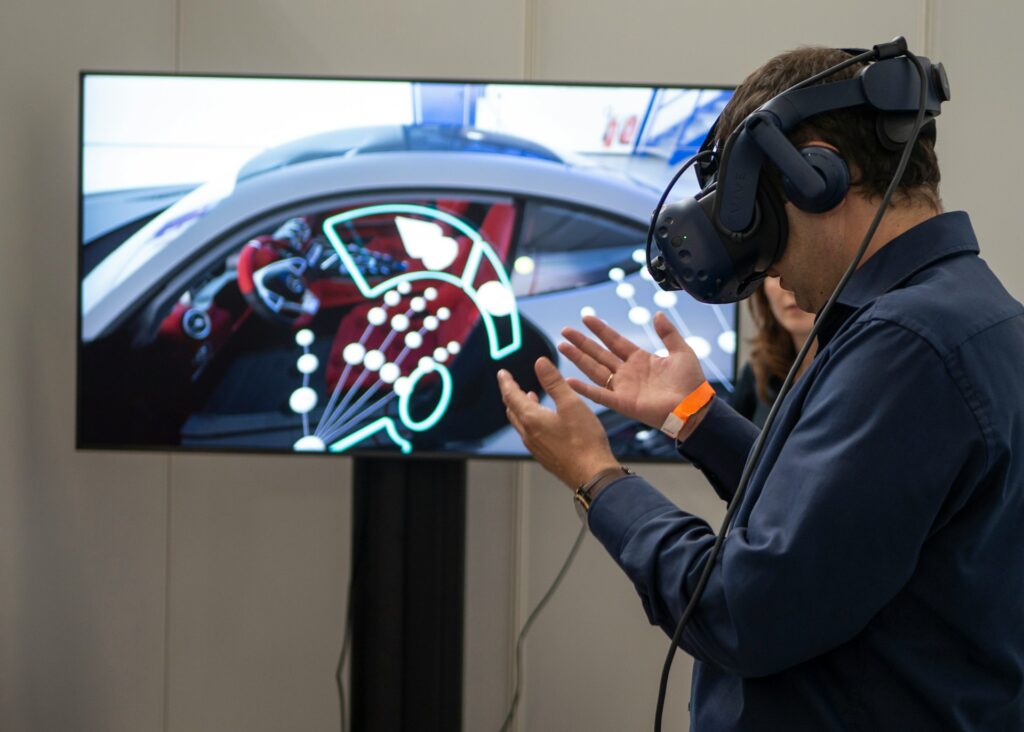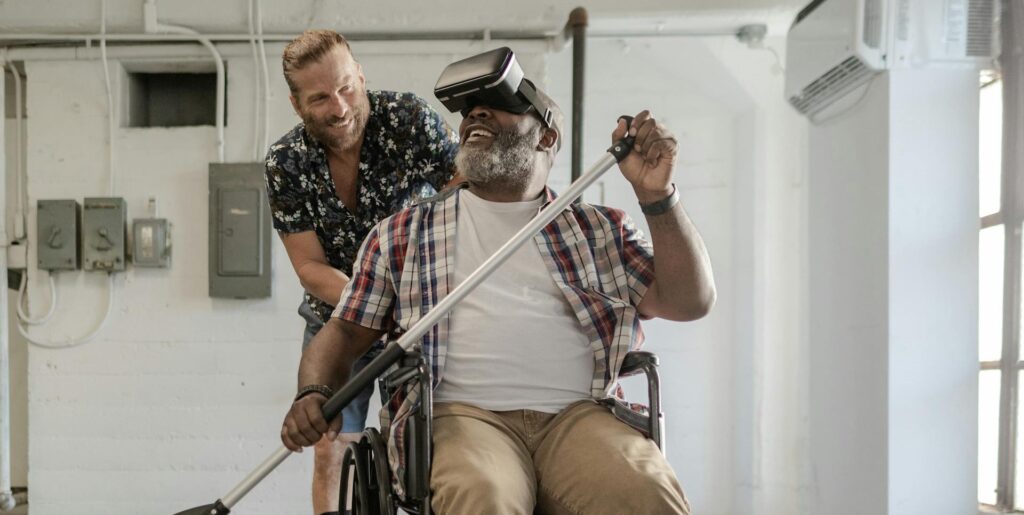At a Tel Aviv hospital using virtual and augmented reality (VR and AR) to aid rehabilitation after injury or debilitating illness, at least one expert believes that this is the best way to help people through the recovery process.
Virtual reality places users in a computer-generated, immersive scenario that blots out the real world, most often with special headsets, while augmented reality adds computer-generated objects to the real world, which are seen mainly through the screen of a device such as a smartphone or tablet.
Dr. Oren Schwartz, manager of the day rehabilitation department at Reuth Rehabilitation Hospital, which is affiliated to Tel Aviv University, explains that rehabilitation is about restoring quality of life, primarily through healing the functioning of the human body. As such, he says, restoring that functioning is best carried out within a “real environment” rather than a hospital or another training facility.
“[Rehabilitation] should be done in a real habitat, in a real environment by new technologies, especially augmented reality and virtual reality,” Schwartz tells NoCamels.

Augmented and virtual reality settings offer such an experience, he maintains, and “we can definitely create it.”
Of the two options, Schwartz tells NoCamels, augmented reality is better for rehab because it creates a “real environment” like a patient’s home, in which to carry out practical exercises such as lifting a cup.
“While practically there is no cup, there is an artificial cup, we teach him to do the correct movement in order to lift it,” he says.
According to Schwartz, the use of augmented reality means that the patient can be presented with a scenario that would make the rehabilitation process more relatable and enjoyable, thereby reducing one of the greatest issues of rehab exercises – adherence to the regimen, which he calls compliance.
“Before we had the new technologies, compliance was pretty low because treatments were boring,” he explains.
“For example, if I try to improve my range of motion, I can do this movement 20 times or 30 times. Now it’s really boring and it’s not related to any function. But if I take the same movement and [give] you a VR instrument and let you play tennis, now you will enjoy what you’re doing.”

Furthermore, creating an AR scenario that requires certain movements can allow the medical team to assess the limitations created by injury or illness and address them correctly.
“Let’s take the scenario of a patient who wanted to treat his plants in his garden,” Schwartz says. “ I can create the scenario on a VR instrument or an AR instrument to take him outside to create a virtual garden and let him work… see what the problems are.”
And once the diagnosis is completed, the hospital can use the same technology to treat the patient, with the aim of expanding that treatment outside of the facility too.
“I create the right scenario for him so that he can treat the plants in his garden,” the doctor explains. “And if he can do it here, he can do it also at home. So practically, I’m bringing his home into my treatment territory.”
Sign up for our free weekly newsletter
SubscribeA similar principle can be applied to rehabilitation for cognitive issues that can also be the result of a stroke (which Schwartz calls “the most debilitating disease in the Western world”) or traumatic head injury. He gives the example of playing a virtual card game, which again he says is more enjoyable as the platform can offer incentives and rewards that encourage the patient to continue.

Schwartz warns, however, that VR/AR rehab is an expensive endeavor. It is not the hardware that makes the treatment costly, as these days the goggles and other devices involved can be found on any high street, but primarily the specialist software required.
“The main barrier for the use of this technology will be the license for the software,” he says, but explains that the hospital is working with around 10 startups who are testing their innovative software at the facility.
“It’s a win-win situation,” Schwartz says. “They get a platform in which they can try the software and improve what is needed, and we get the software for half a year or one year for free.”
After that period, if the software fulfills expectations, the hospital purchases a license from the relevant startup.
The facility is in the process of developing a similar platform to help people suffering from PTSD. Schwartz points out that PTSD diagnoses are placing heavy strain on Israel’s health services due to the widespread trauma caused by the ongoing war against Hamas, following the brutal terror attack on October 7 of last year that killed 1,200 people and wounded thousands more.
The platform is being created in a joint venture between the hospital’s psychiatrists and external companies. It should be ready in several months, and Schwartz believes it could be of particular help to soldiers suffering PTSD from their experiences in the war.

The principle behind it, which is also espoused by the Israeli military, is that PTSD patients should be exposed to the source of trauma as swiftly as possible in order to face the triggers for their disorder.
“Maybe just [recreating] the scenario that they were in may help them very much to overcome it,” Schwartz says.
In this case, he says, VR is more suitable because “you want the patient back exactly to the scenario he was in.”
Schwartz believes that both AR and VR can crucially give the patient belief that they can get back to a point where the movements that came naturally before injury or illness will do so again, erasing a mental roadblock on the journey back to mobility.
“We create a reassurance,” he says. “Many patients don’t do things because they believe they can’t do it. So we can teach them first of all that they can.”
Related posts

Editors’ & Readers’ Choice: 10 Favorite NoCamels Articles

Forward Facing: What Does The Future Hold For Israeli High-Tech?

Impact Innovation: Israeli Startups That Could Shape Our Future




Facebook comments